Capturing Carbon
- Posted 07.02.08
- NOVA scienceNOW
(This video is no longer available for streaming.) How did an eighth-grader's science fair project inspire a new way to tackle rising levels of carbon dioxide in the atmosphere? Claire Lackner's father Klaus, a geophysicist at Columbia University, had a brainstorm after he saw how Claire used an aquarium pump to capture carbon dioxide in the air. A decade later, Dr. Lackner is testing a product inspired by his daughter's vision.
Transcript
CAPTURING CARBON
PBS Airdate: July 2, 2008
NEIL deGRASSE TYSON: Every creature on Earth does the same thing. We take in oxygen and then give out carbon dioxide, with the same breath. And while we're putting out CO2, trees, like this one, and other plants are sucking it right up. They need it to survive!
But with worldwide population growth and increased fossil fuel consumption, we're now putting out more CO2 than our trees and plants can absorb. And since CO2 is a greenhouse gas, there're fears that all this carbon dioxide is heating up our planet.
For some the solution is obvious. Correspondent Peter Standring met up with some inventors trying to design a very "green" machine, one that can "make like a tree..."
PETER STANDRING (Correspondent): In a warehouse on the outskirts of Tucson, Arizona, Professor Klaus Lackner has come up with an idea even he admits is a bit fantastic. He's attempting to compete with Mother Nature.
KLAUS LACKNER: We are trying to mimic what a tree can do. And these are the leaves of that tree.
PETER STANDRING: Mimic a tree?
KLAUS LACKNER: Some people would say this can't possibly be done, but then, on the other hand, every tree can do it.
PETER STANDRING: Every tree, in fact every leaf, is like a tiny factory, taking in carbon dioxide from the air and using it to make the energy it needs to survive. In the process, it releases the oxygen that we need to live.
Klaus's version of a tree also pulls carbon dioxide out of the air. Not for its own survival, but to help us fight global warming. Sounds pretty incredible? Well, so is the way he came up with the idea.
It all started a decade ago, when his 12 year-old-daughter, Claire, came to him for advice.
KLAUS LACKNER: When I started to think about this problem, I was looking for ways of doing experiments. And, just about that time, Claire came to me in the study at home and said she is looking for an experiment to do for her science fair.
CLAIRE LACKNER (Student, Princeton University): I was in middle school, and I had to do a science experiment for my science class. And so I talked to my dad about various ideas and he suggested this.
KLAUS LACKNER: I said, "Why don't you pull CO2 out of the atmosphere?"
PETER STANDRING: Pull carbon dioxide out of the air? A tall order for a little girl. But, as the daughter of a renowned scientist, Claire already knew about global warming. She understood that when sunlight enters the atmosphere and strikes the Earth's surface, some of it is reflected back towards space in the form of heat.
Greenhouse gases like CO2, carbon dioxide, work like a chemical blanket to trap heat and keep the planet nice and warm. But the increased burning of fossil fuels was generating so much carbon dioxide that our planet's temperature appeared to be rising at an alarming rate.
But how could you just pull CO2 out of the air?
PARROT: Hello.
PETER STANDRING: Claire had an innovative idea.
CLAIRE LACKNER: I went to the local pet shop and bought a fish pump. I filled a test tube with sodium hydroxide. Next, I attached the fish pump to the test tube, turned it on and ran air through it all night.
PETER STANDRING: As Claire slept, her experiment was hard at work. The fish pump was forcing air containing a small percentage of CO2 into the test tube.
CO2 is an acid, much like vinegar. Sodium hydroxide, the liquid in the test tube, is a base, kind of like baking soda but stronger, a lot stronger. It's made of lye; the nasty stuff that cleans out your drain.
When acids and bases meet, they not only attract, but they bind to each other. It's called an acid-base reaction.
CLAIRE LACKNER: So the carbon dioxide binds to the sodium hydroxide and leaves the air.
PETER STANDRING: Claire succeeded in capturing carbon dioxide straight from the air, won a prize at the science fair, and changed the course of her father's life.
KLAUS LACKNER: I was surprised that she pulled this off as well as she did, which made me feel that it could be easier than I thought.
The first sketch I made ended up looking like a tuning fork or a goal post with Venetian blinds.
PETER STANDRING: A far cry from Mother Nature's design.
KLAUS LACKNER: The first reaction of most people, is, "Why take CO2 out of the air, where it's more dilute than in any other place? Clearly, it must be easier to get it out of a power plant." But not all of the CO2 comes out of a power plant.
PETER STANDRING: A lot comes from cars, trucks and airplanes burning fuel. Once in the air, CO2 is very dilute, making the idea of capturing it sound close to impossible.
If Klaus was going to make this far-out idea a reality, he was going to need some practical advice.
KLAUS LACKNER: If you look at Claire's experiment what she had is a test tube.
PETER STANDRING: So he went to the Wright brothers, not Orville and Wilbur, but project manager and engineer Allen and Burton, another set of brothers, who, like their namesakes, don't shy away from a challenge.
ALLEN WRIGHT (Global Research Technologies): The Wright brothers were able to look at a bird in flight, so they knew it was possible to fly. Klaus and I will look at a tree and say, "Well, you know, that tree is capturing carbon dioxide out of the air. We know it can be done; got to figure out how to do it."
PETER STANDRING: Not just in the laboratory with a tiny fish pump and a test tube, but on a global scale.
In 2004, they form a private company called GRT.
But the transition from a child's science fair project to the first synthetic tree is filled with obstacles. One, in particular, could stop them dead in their tracks. Their tree needs electricity to run. And whenever you produce electricity by burning oil, gas or coal, you also produce carbon dioxide. It's called an energy penalty.
If their synthetic tree produces more CO2 to run than it can capture, well, what's the point?
A delicate balancing act begins. For every choice the team makes there is a price to pay, an energy penalty. Can they somehow reduce the amount of energy they use?
KLAUS LACKNER: We needed to come up with a shape where you don't have to have an aquarium fish pump driving all the air through the system, but to have the wind just deliver the air and pass it through the collector.
PETER STANDRING: It all comes down to geometry. What is the size and shape of the perfect synthetic leaf, one that can remove the most CO2 from the air?
To find out, they construct a wind tunnel to study how air moves around and through a variety of surfaces.
KLAUS LACKNER: The easier it is to get air through, the more CO2 we can collect.
ALLEN WRIGHT: We tried an array of strings; we tried screens; we tried vertical plates of solid material that were smooth; we tried vertical plates that had a knobby surface.
PETER STANDRING: With each attempt, they measure the air pressure in the wind tunnel. A drop in pressure means the airflow has stopped, and that sample has failed.
ALLEN WRIGHT: Nineteen...so this is not the answer.
PETER STANDRING: It takes a year to find a shape that lets enough air pass through.
ALLEN WRIGHT: Perfect.
PETER STANDRING: It turns out to be long flat sheets.
ALLEN WRIGHT: The air would move through with very little resistance. It worked well.
PETER STANDRING: So air can move through their manmade leaves, but how will they capture CO2?
At first they follow Claire's lead, coating the leaves with sodium hydroxide. The chemistry is sound, but it's a nasty business.
ALLEN WRIGHT: It'll be a much tougher job for us.
KLAUS LACKNER: Sodium hydroxide is great to prove it can be done, but it has so many disadvantages.
ALLEN WRIGHT: Sodium hydroxide is a very corrosive material, it's not a good idea to get it on your skin; it's very harmful if you were to get it in your eyes. As a practical matter, trying to build a machine that works on sodium hydroxide would force us to use very expensive materials. It would drive the cost up significantly.
PETER STANDRING: The guys decide to abandon the idea of using sodium hydroxide when they make a startling discovery: this material. Now, exactly what this material is, the guys aren't telling.
BURTON WRIGHT: What is it?
ALLEN WRIGHT: Do I have your attention?
BURTON WRIGHT: We can't tell you.
PETER STANDRING: Turns out this is where science and commerce collide. Its true identity is proprietary, that is, until their patent comes through.
The team claims that this engineered fabric attracts CO2 just like sodium hydroxide, but with none of the pitfalls.
Here's how the system works: the nine-foot synthetic tree opens its doors letting air flow through its leaves, which, thanks to their mystery material, readily absorb carbon dioxide. The leaves are then sprayed to wash the CO2 away for storage.
The process does use electricity, but, in the future, they hope, green power will make the device even more energy-efficient.
Still one big question remains: what to do with all that CO2.
One option lies miles from civilization. Since 1996, a Norwegian oil company has gotten a lot of practice getting rid of CO2 by pumping it into an aquifer deep beneath the North Sea. The process is called carbon sequestration. But could the carbon leak out? If so, what effect would it have on marine life?
MARTIN HOFFERT (New York University): Once you've got enough gas under there, and it's leaking out, it could become a very serious problem.
PETER STANDRING: And how much CO2 can they put down there anyhow?
KLAUS LACKNER: I believe, in the long term, underground injection will not quite have the capacity we're looking for, so I am looking at another process which I refer to as mineral sequestration.
PETER STANDRING: There's a perfect example of it in New York City, on the campus of Columbia University, underneath a bronze statue of the school alma mater.
KLAUS LACKNER: She is sitting on this pedestal of serpentine rock. This serpentine has absorbed CO2, probably out of rainwater. It's known as geological weathering, and if you wait long enough, that's what will happen to all the CO2 we make.
PETER STANDRING: But it takes hundreds of thousands of years for Mother Nature to pull off geological weathering, and we don't have that long to wait, so Klaus is trying to figure out a way to speed it up in the lab.
As for his tree? He now has a working prototype, but many questions remain unanswered. Like, how well will it survive the elements? And who's going to a pay for it?
Is Klaus's tree too fantastic to be real?
MARTIN HOFFERT: You could have said that about the Wright brothers and Thomas Edison.
I can't sit here and tell you now that this is going to work. I can tell you now that it would be a terrible mistake not to do the research to find out.
KLAUS LACKNER: I believe that it is impossible to stop people from using the fossil fuels, so we need to develop technologies which allow us to use them without creating environmental havoc on the planet.
CLAIRE LACKNER: We are, as a world, changing the climate and changing the Earth. And we need to understand how we are changing it, and we need to understand what we would do: either how to fix it or to control how we change it.
Credits
Capturing Carbon
- Edited by
- David Chmura
- Produced and Directed by
- Terri Randall
NOVA scienceNOW
- Executive Producer
- Samuel Fine
- Executive Editor
- Neil deGrasse Tyson
- Senior Series Producer
- Vincent Liota
- Supervising Producers
- Stephen
Sweigart
Joey David - Editorial Producer
- Julia Cort
- Development Producer
- Vinita Mehta
- Senior Editor
- David Chmura
- Online Editor
- Laura Raimondo
- Series Production Assistant
- Fran Laks
- Assistant Editors
- Susan Perla
Tung-Jen (Sunny) Chiang - Compositors
- Brian Edgerton
Yunsik Noh - Music
- Rob Morsberger
- NOVA scienceNOW series animation
- Edgeworx
- Associate Producers
- Heeth Grantham
Anthony Manupelli
Jeff Marion
John Pavlus - Camera
- Steve Baum
Joe Brunette
Brian Dowley
Tom Fahey
Marco Nauta
Daryl Patterson-Pendana
Jon Shenk - Sound Recordists
- Clint Bramesco
Michael Cottrell
Doug Dunderdale
Eric Leek
Claudio Musajo
Daryl Patterson-Pendana - Assistant Camera
- Petr Stepanek
- Sound Mix
- David Chmura
- Animation
- Ben Fry
Brian Edgerton
Sputnik Animation
James LaPlante - Production Assistants
- Nadira Ilana
Dan Sites
Elizabeth Stachow
Sylvia Vidurri - For Lone Wolf Documentary Group
- Executive Producer
- Kirk Wolfinger
- Production Manager
- Donna Huttemann
- Archival Material
- Corbis
National Human Genome Research Institute
Vulcan Productions - Special Thanks
- Affymetrix
George Church
Ben Fry
Christopher Graves
Icelandic Tourist Board
Maryam M. Khani
Sam Krevor
Petqua
Peter Renee
StatoilHydro
Thousand Days
Tucson 12
Jennifer Wade
Hans Ziock - Neil deGrasse Tyson
- is director of the Hayden Planetarium in the Rose Center for Earth and Space at the American Museum of Natural History.
- NOVA scienceNOW Consortium Stations
- Nebraska
Educational Telecommunications, NET
Public Broadcasting for Northern California, KQED
Twin Cities Public Television, TPT
Wisconsin Public Television, WPT - NOVA Series Graphics
- yU + co.
- NOVA Theme Music
- Walter Werzowa
John Luker
Musikvergnuegen, Inc. - Additional NOVA Theme Music
- Ray Loring
Rob Morsberger - Post Production Online Editor
- Spencer Gentry
- Closed Captioning
- The Caption Center
- Publicity
- Carole McFall
Eileen Campion
Lindsay de la Rigaudiere
Victoria Louie
Kate Becker - Senior Researcher
- Gaia Remerowski
- Production Coordinator
- Linda Callahan
- Paralegals
- Raphael Nemes
Sarah Erlandson - Talent Relations
- Scott Kardel, Esq.
Janice Flood - Legal Counsel
- Susan Rosen
- Post Production Assistant
- Darcy Forlenza
- Associate Producer, Post Production
- Patrick Carey
- Post Production Supervisor
- Regina O'Toole
- Post Production Editors
- Rebecca Nieto
Alex Kreuter - Post Production Manager
- Nathan Gunner
- Compliance Manager
- Linzy Emery
- Business Manager
- Joseph P. Tracy
- Producers, Special Projects
- Lisa Mirowitz
David Condon - Coordinating Producer
- Laurie Cahalane
- Senior Science Editor
- Evan Hadingham
- Senior Series Producer
- Melanie Wallace
- Managing Director
- Alan Ritsko
- Senior Executive Producer
- Paula S. Apsell
This material is based upon work supported by the National Science Foundation under Grant No. 0638931. Any opinions, findings, and conclusions or recommendations expressed in this material are those of the author(s) and do not necessarily reflect the views of the National Science Foundation.
NOVA scienceNOW is a trademark of the WGBH Educational Foundation
NOVA scienceNOW is produced for WGBH/Boston by NOVA
© 2008 WGBH Educational Foundation
All rights reserved
- Image credit: (leaves) © WGBH Educational Foundation
Participants
- Martin Hoffert
- New York University physics.nyu.edu/people/hoffert.martin.html
- Claire Lackner
- Student, Princeton University
- Klaus Lackner
- Columbia University
- Peter Standring
- Correspondent
- Allen Wright
- Global Research Technologies www.grestech.com/
Related Links
-
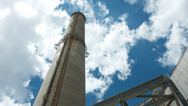
Reversing Climate Change
Combining two proven technologies could turn the dirtiest coal plants into climate-saving terraforming machines.
-
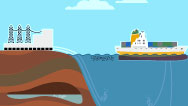
Where Do We Put the Carbon?
Explore options for storing the carbon dioxide that threatens to turn Earth into a solar oven.
-
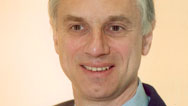
Capturing Carbon: Expert Q&A
Geophysicist Klaus Lackner of Columbia University answers questions about carbon capture and storage.
-
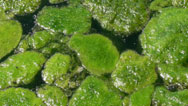
Algae Fuel
In the search for alternatives to gasoline, are algae the answer?
-
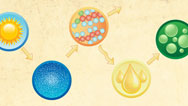
From Pond Scum to Power
In this animated primer, learn why algae and other plants make oil, and how algae oil gets converted to biodiesel.
-

Capturing Carbon
In this video, a scientist develops a synthetic "tree" to remove excess carbon dioxide from the air.



